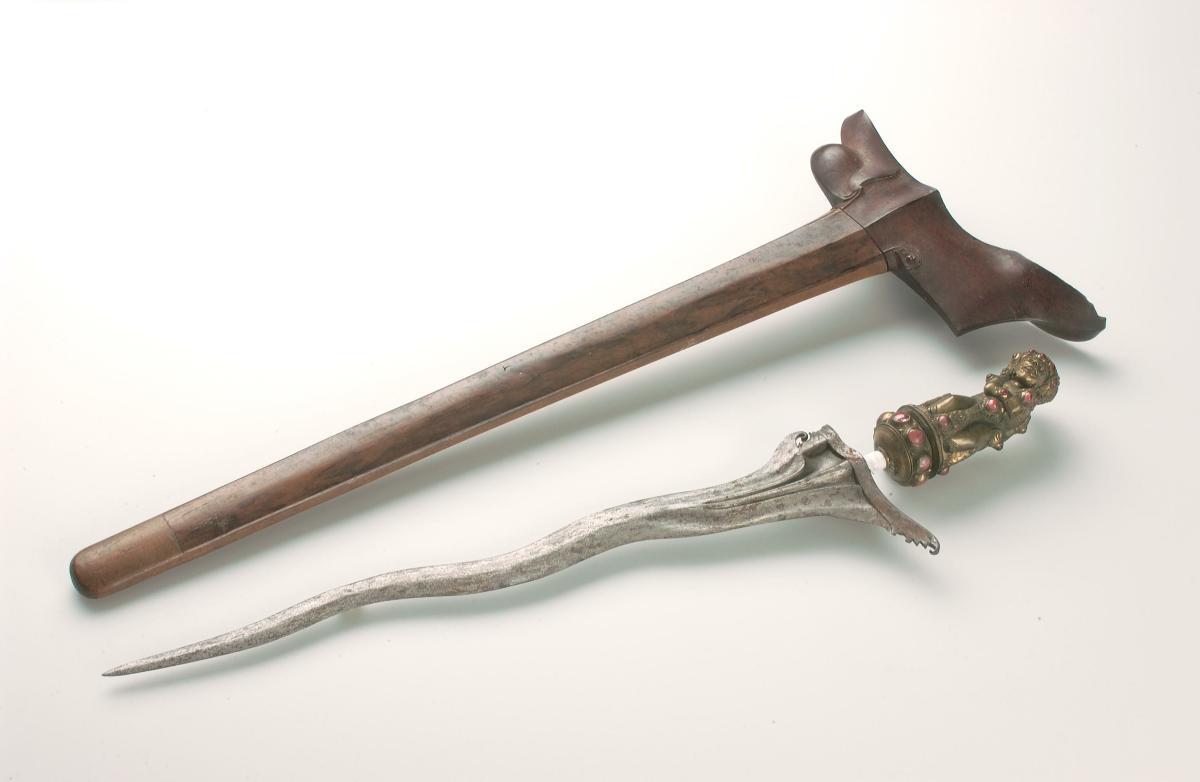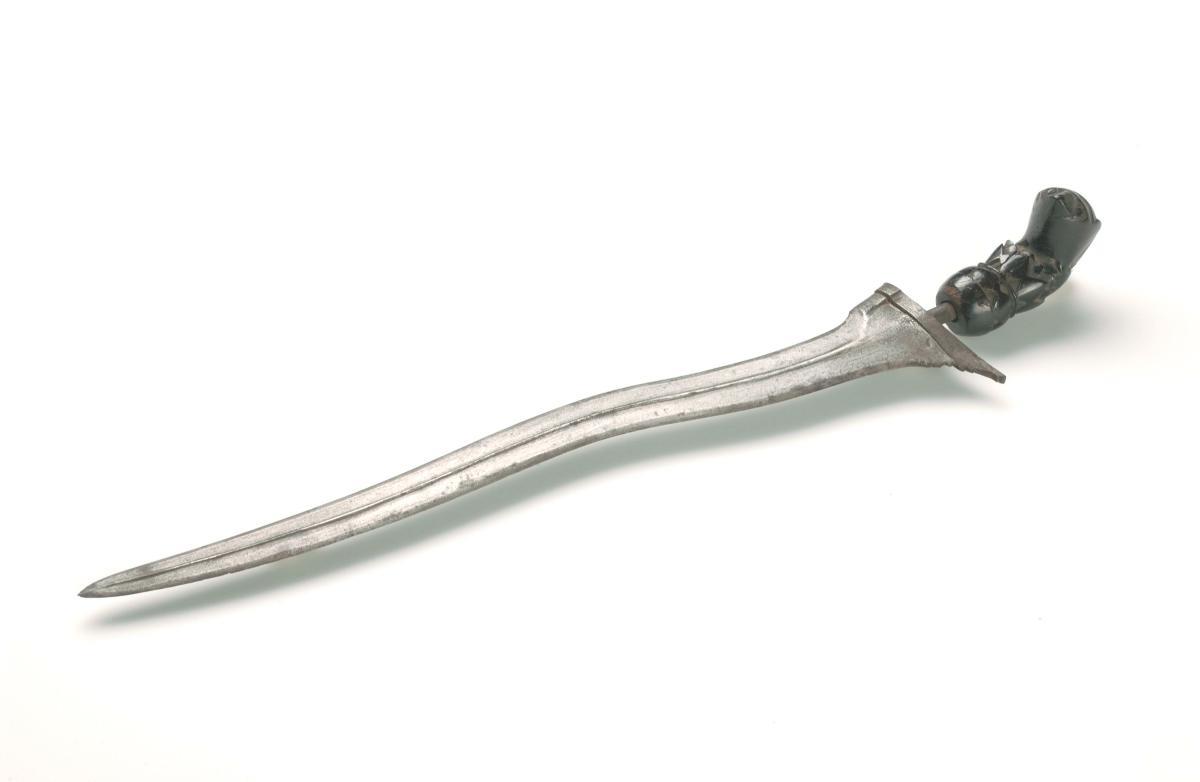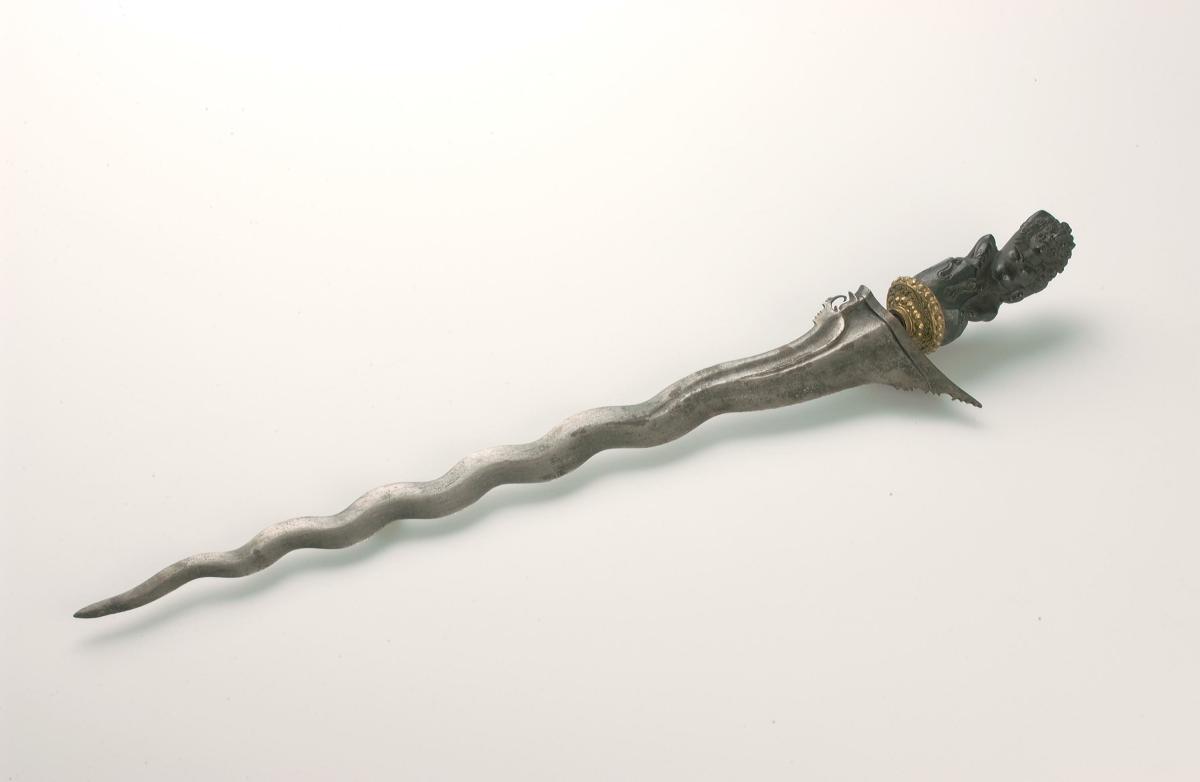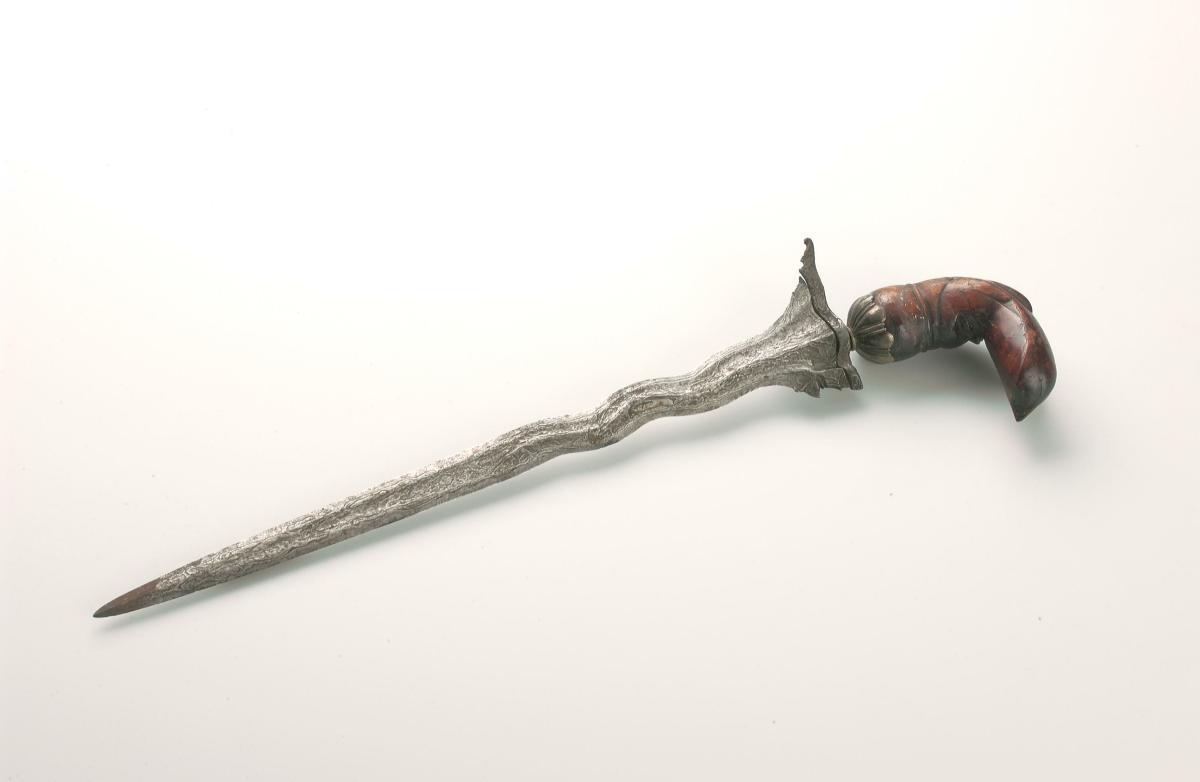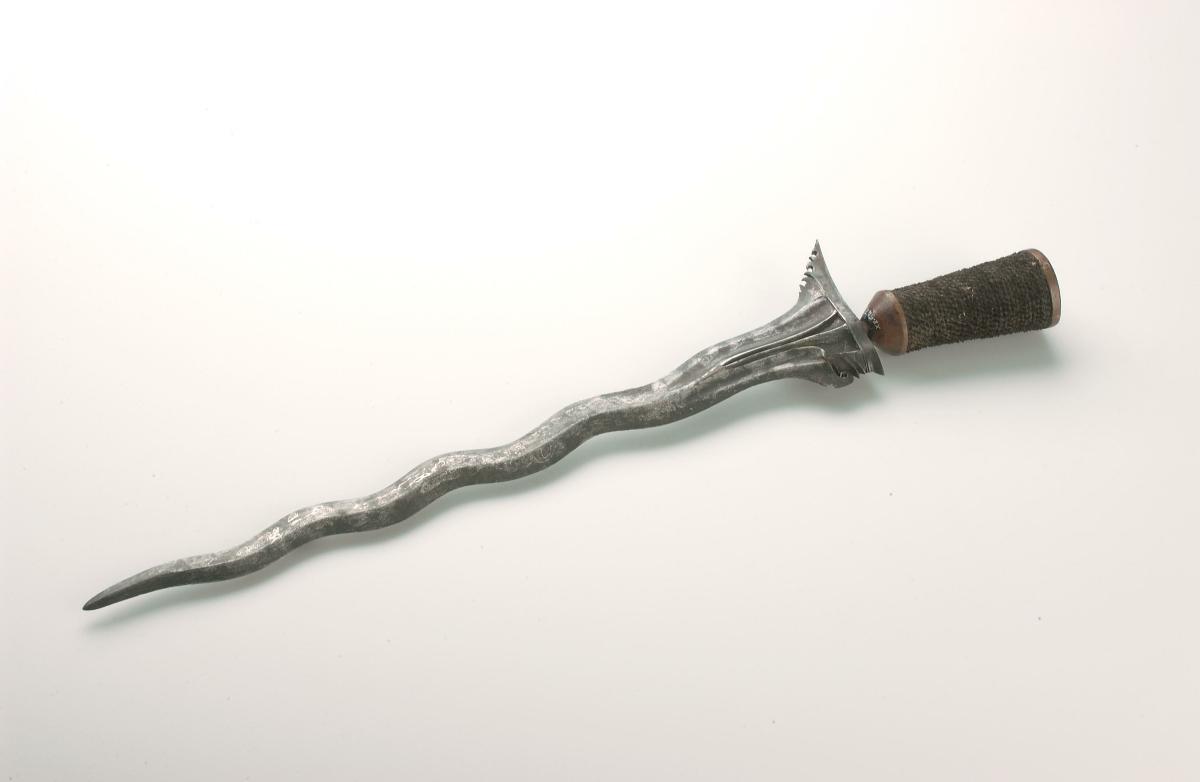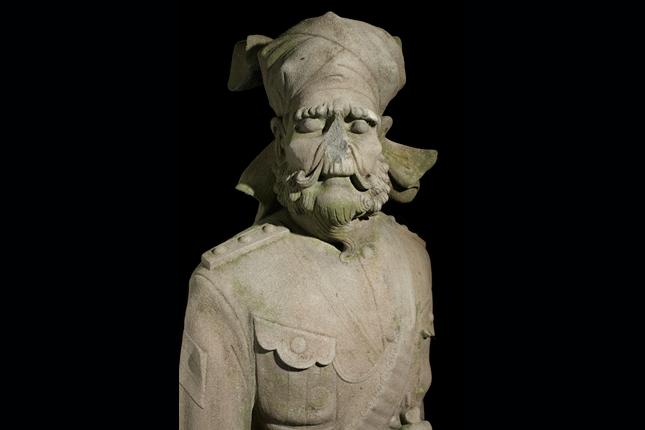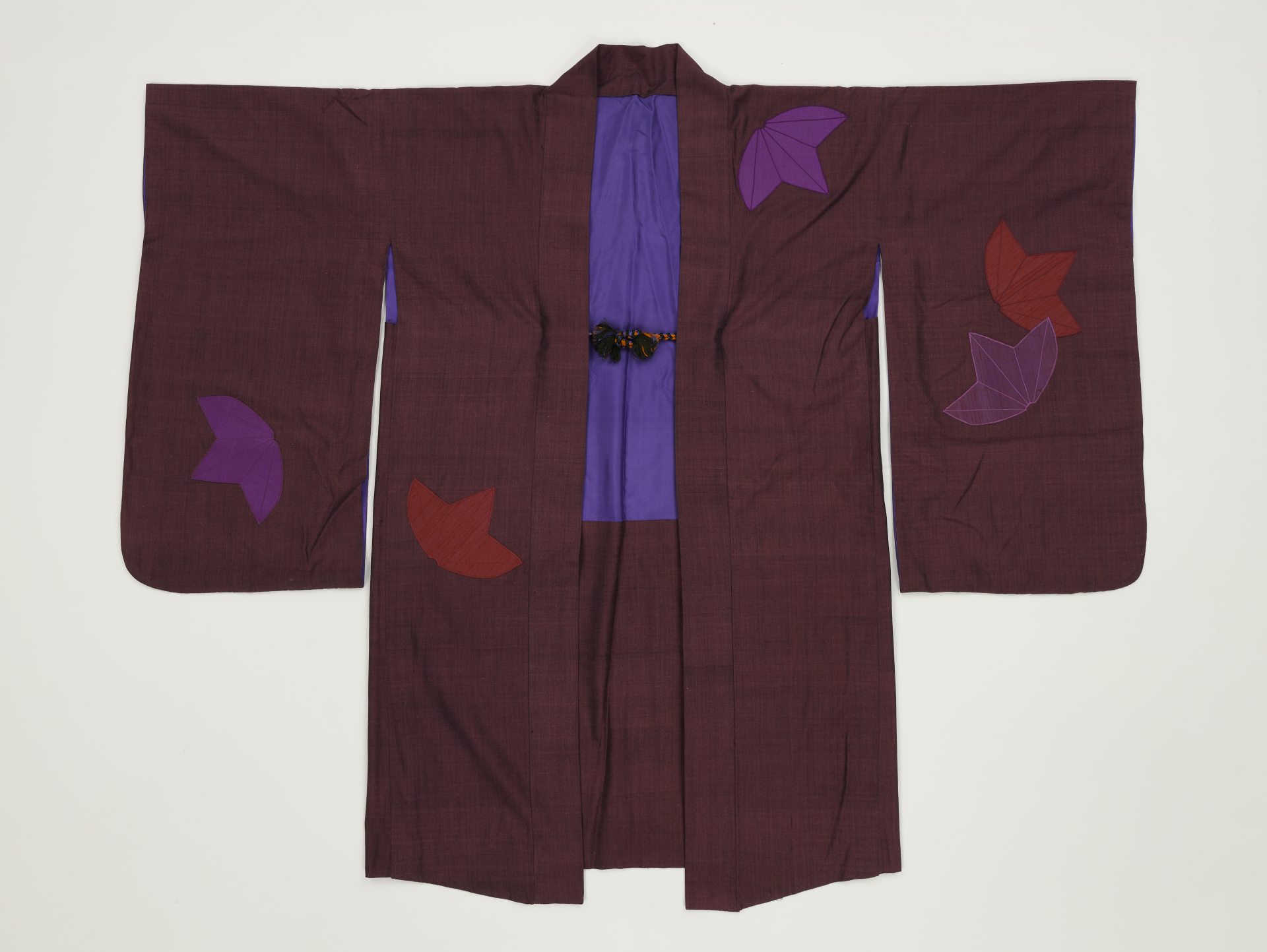Object size: XXXX-04345-001 53.3 x 10.5 cm,
Object size: XXXX-04345-002 58.3 x 20 cm
The flaring sheath of this Balinese keris resembles the outline of a boat. The hilt is in the shape of a figure which is meant to depict Bayu (Vayu), the Hindu god of the wind. Bayu is often shown encrusted with jewels and holding a prominent centre stone which symbolises amritsa, the elixir of life. The keris belongs to a group of Malay and Javanese keris collected by Gerald Brousseau Gardner (1884–1964) between 1911 and 1936. During this period, Gardner a colonial civil servant, a writer and occultist, sold approximately a hundred items to the Raffles Museum. Gardner was a weapons enthusiast. To the vast majority of European collectors at that time, the keris was merely a weapon. Gardner however, noticed the keris had a wide range of styles and make. He came to realise that each keris had its own cultural references. He often invited his Malay friends to show their keris and ‘collected’ supernatural tales of them. These tales were recorded in his book, 'Keris and Other Malay Weapons'.




